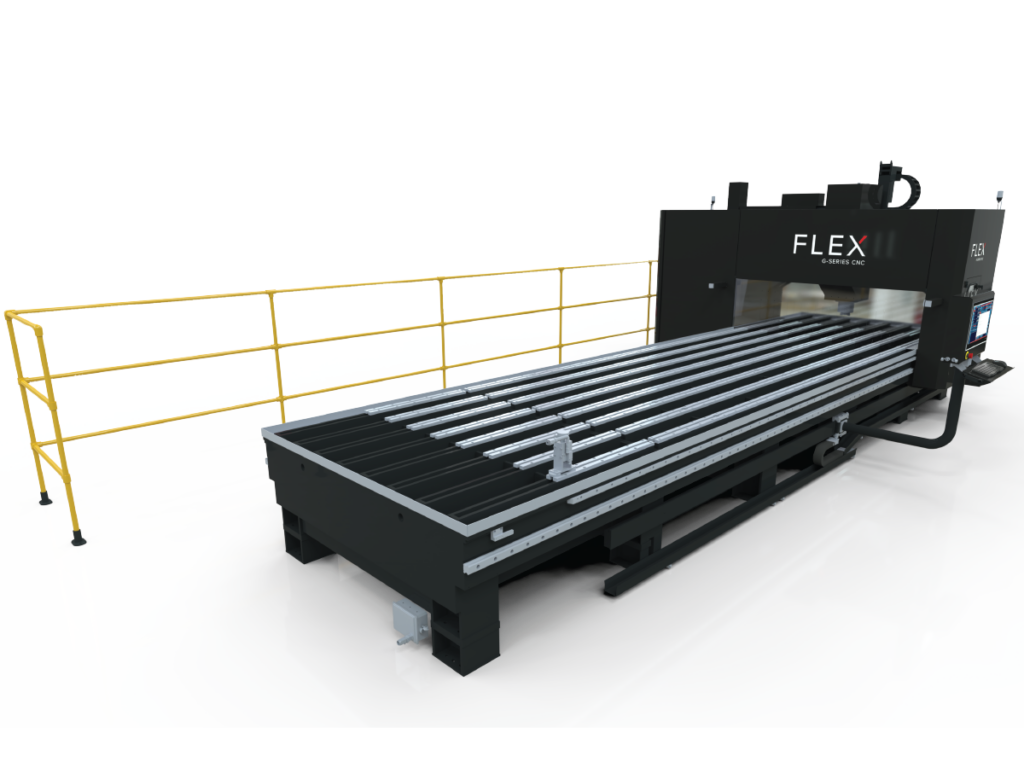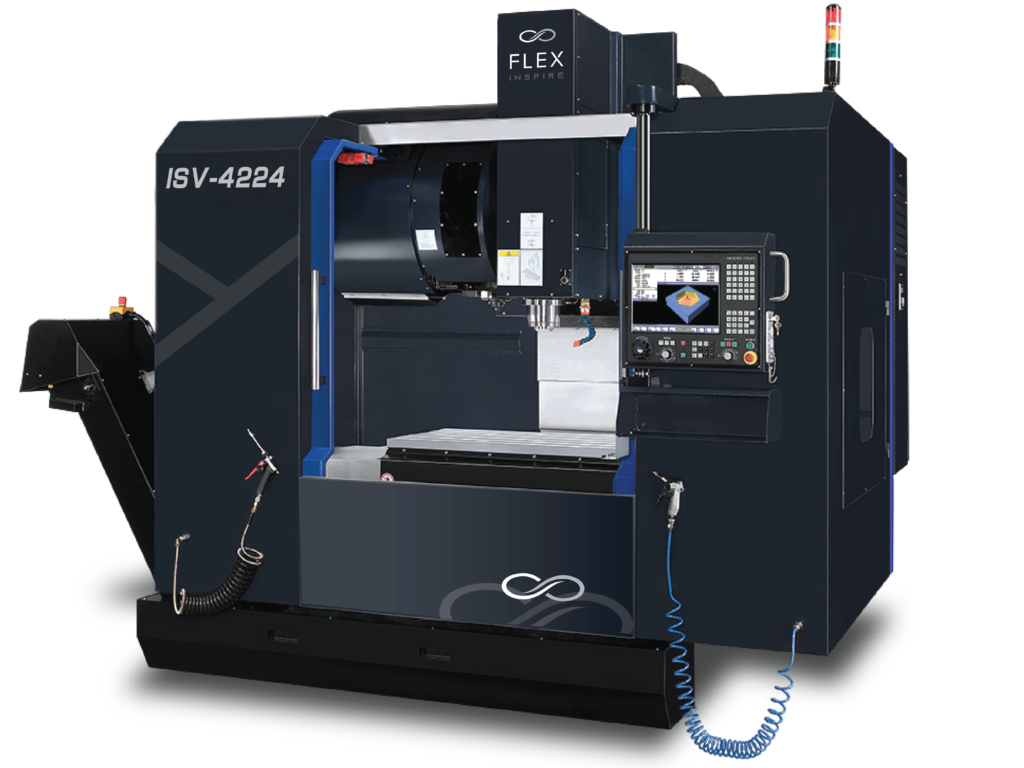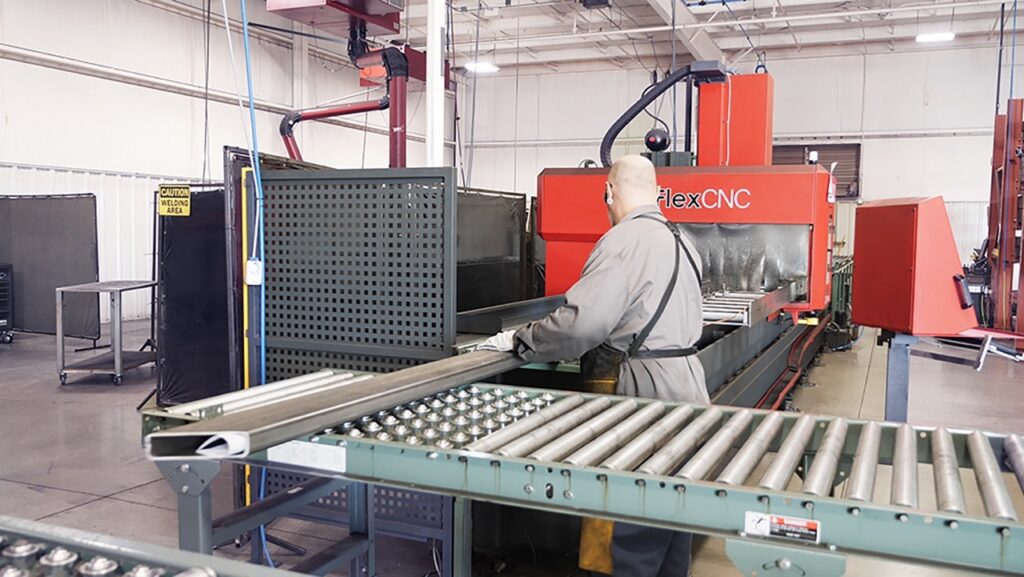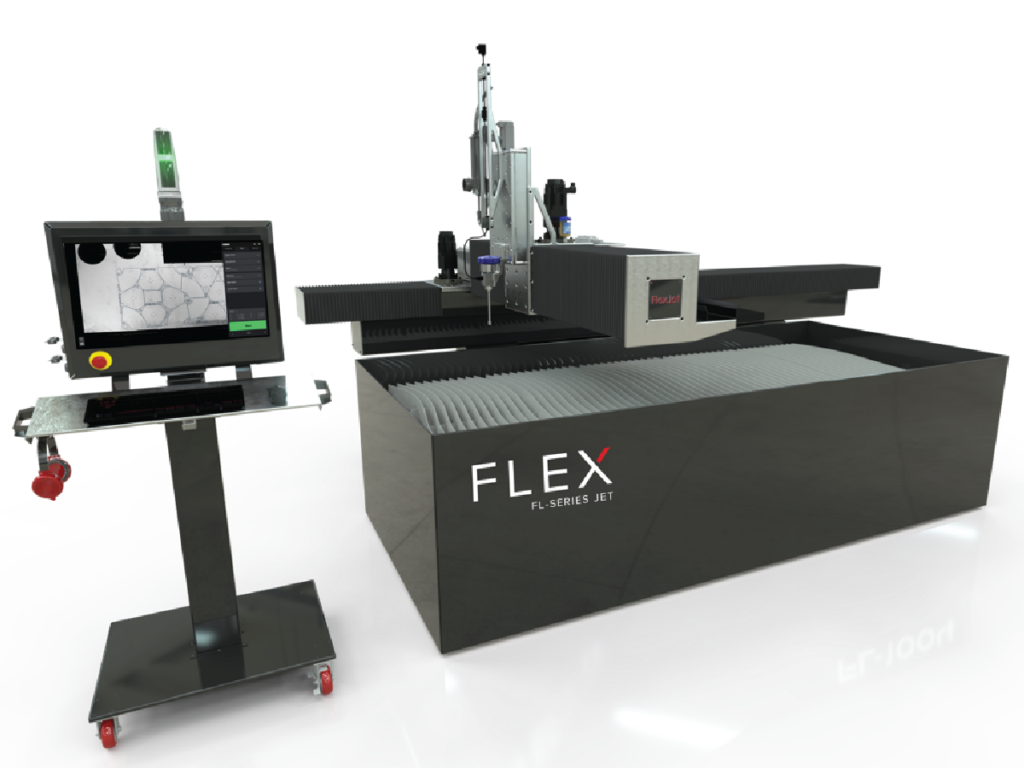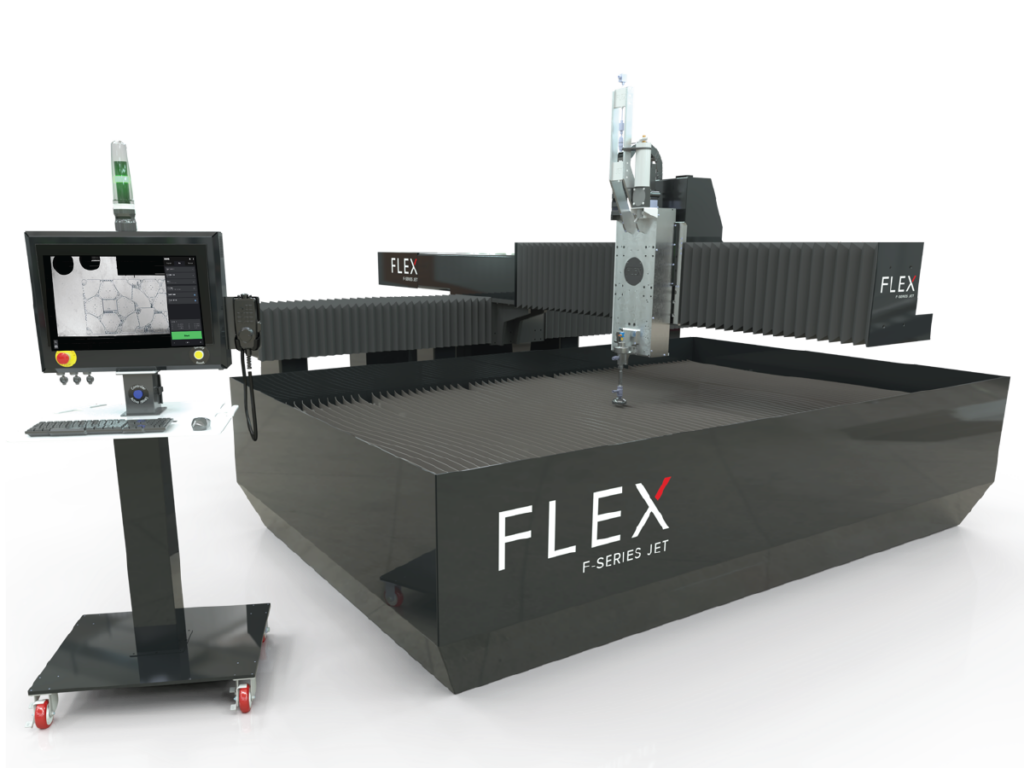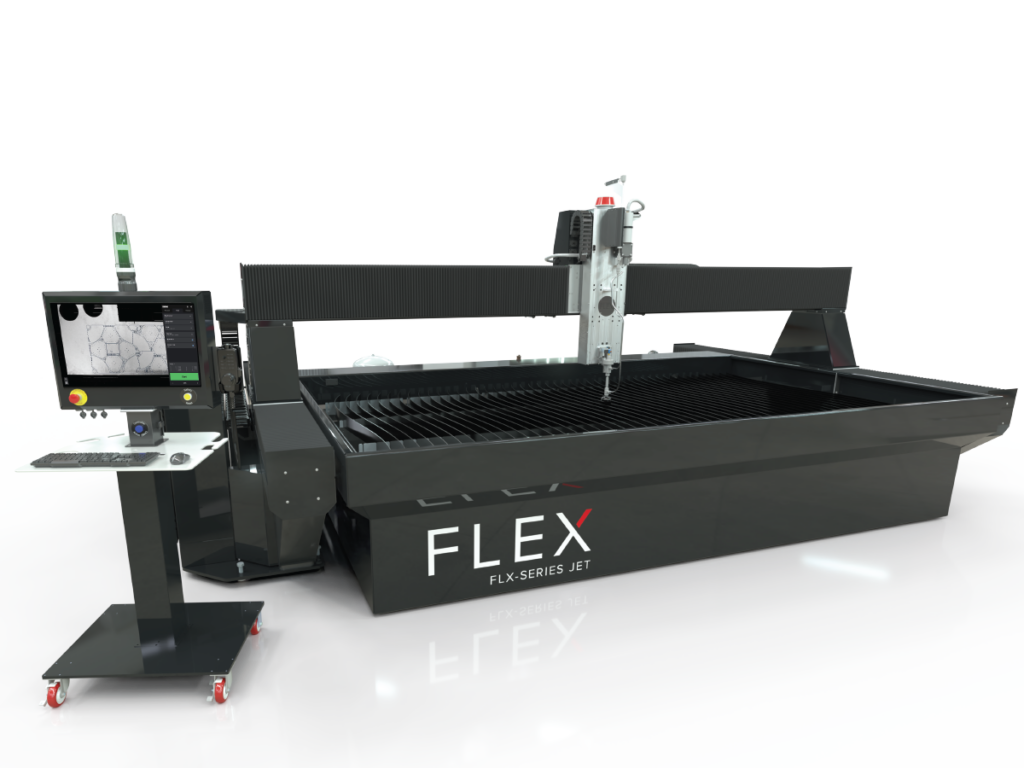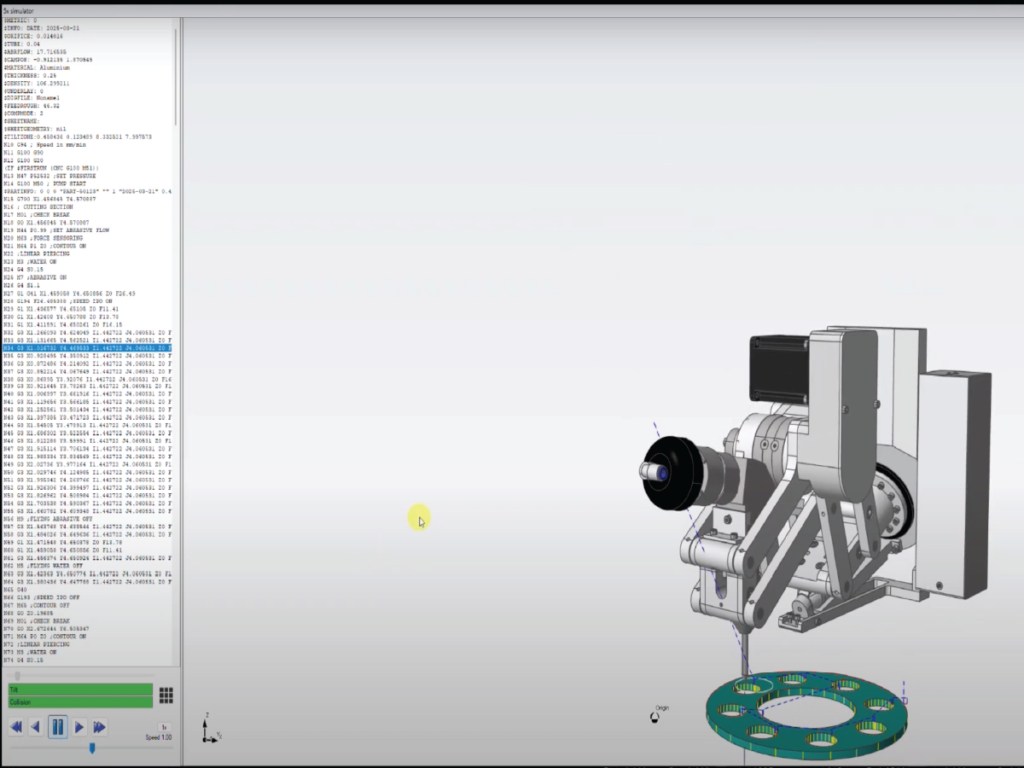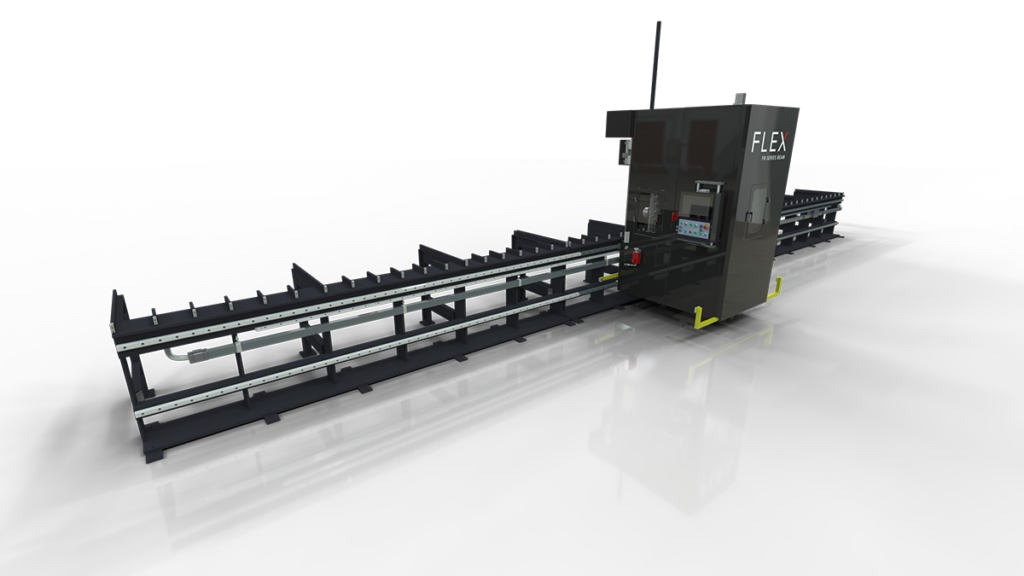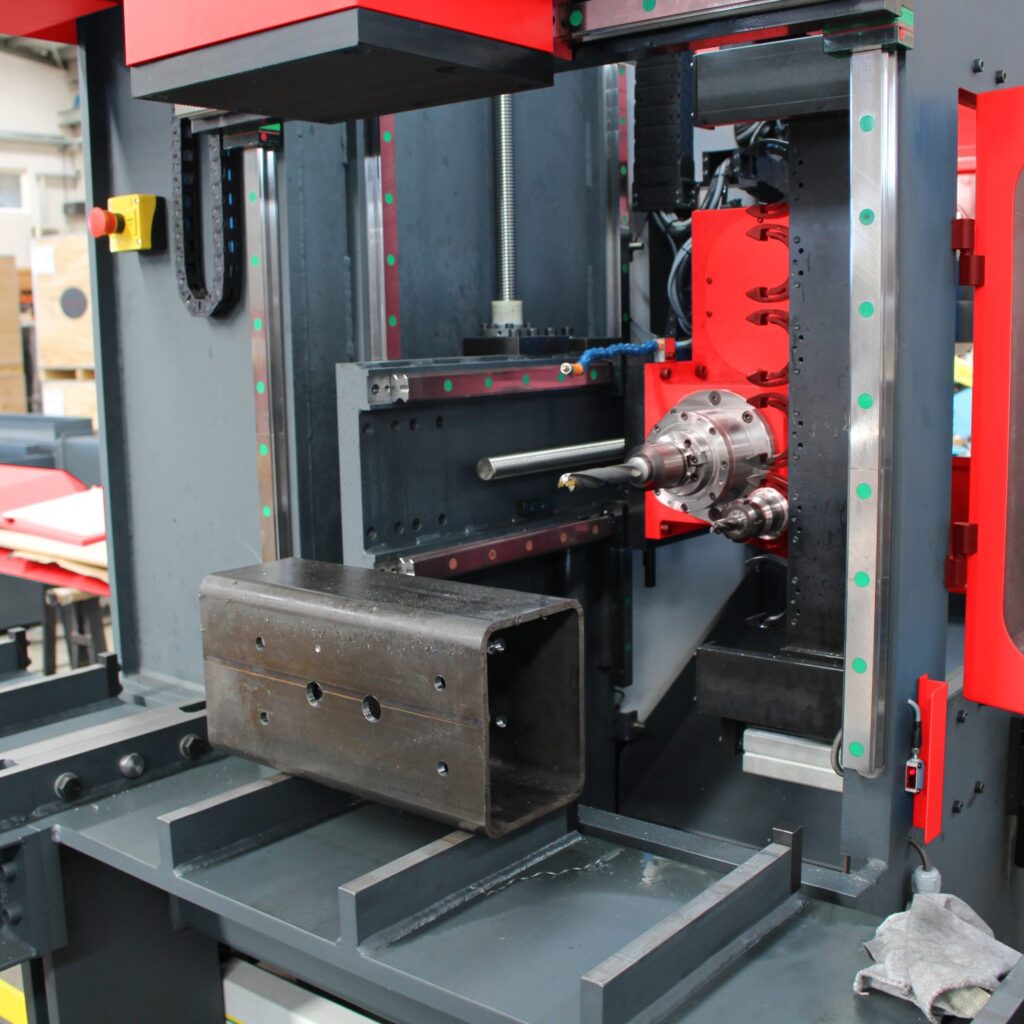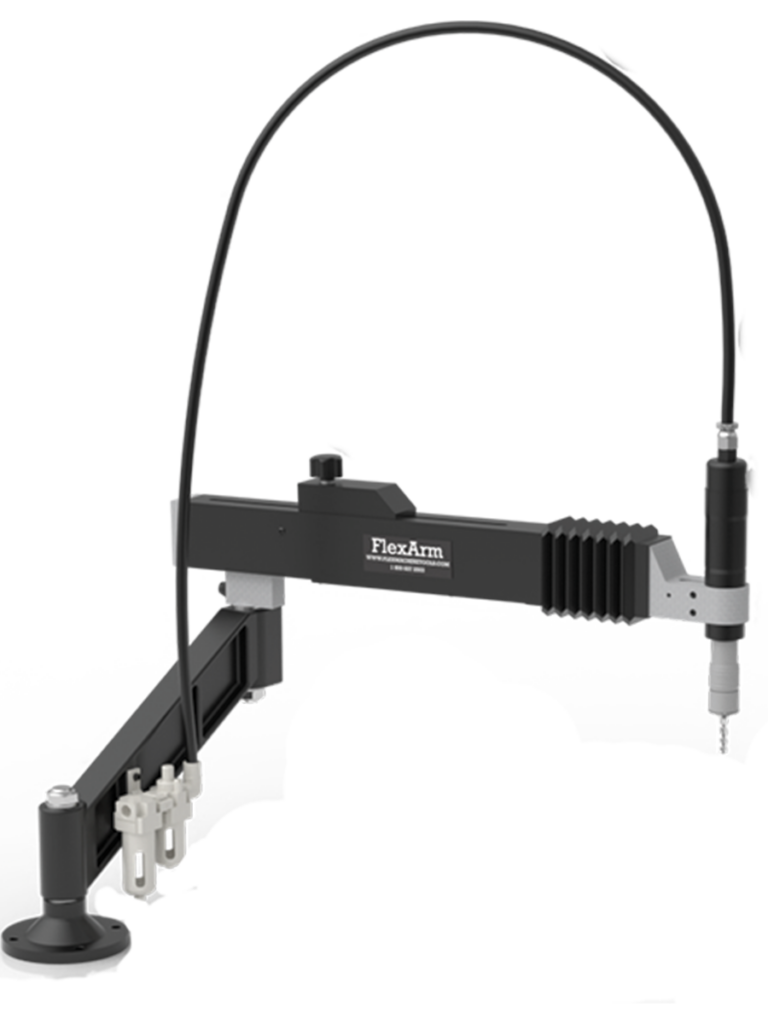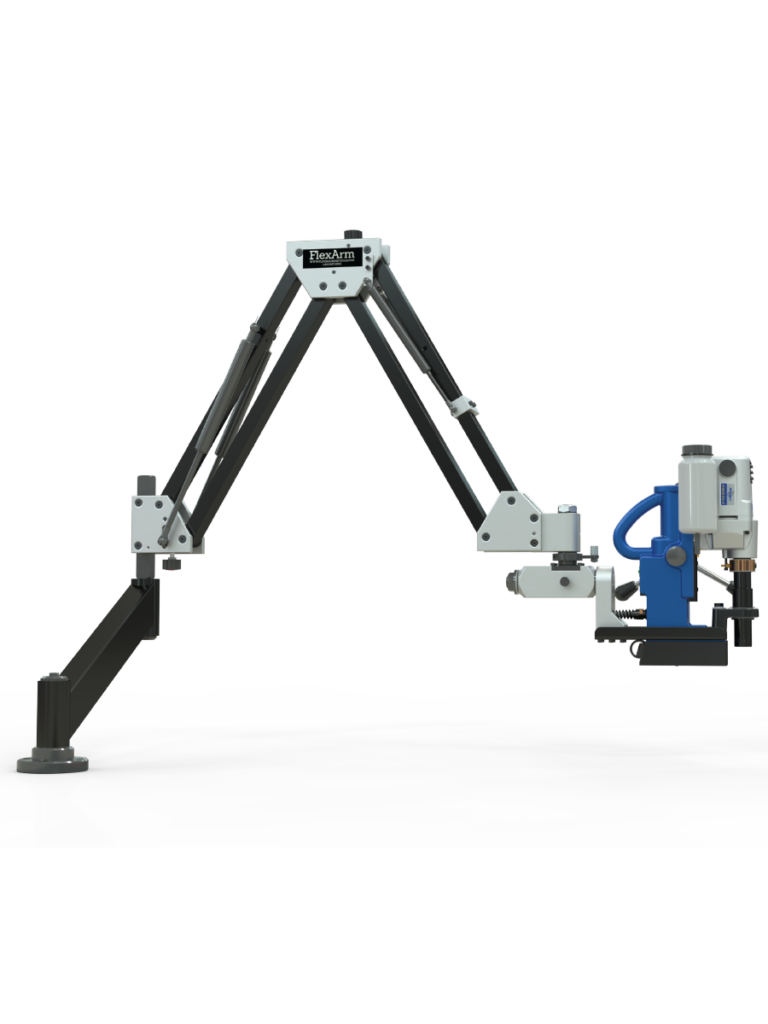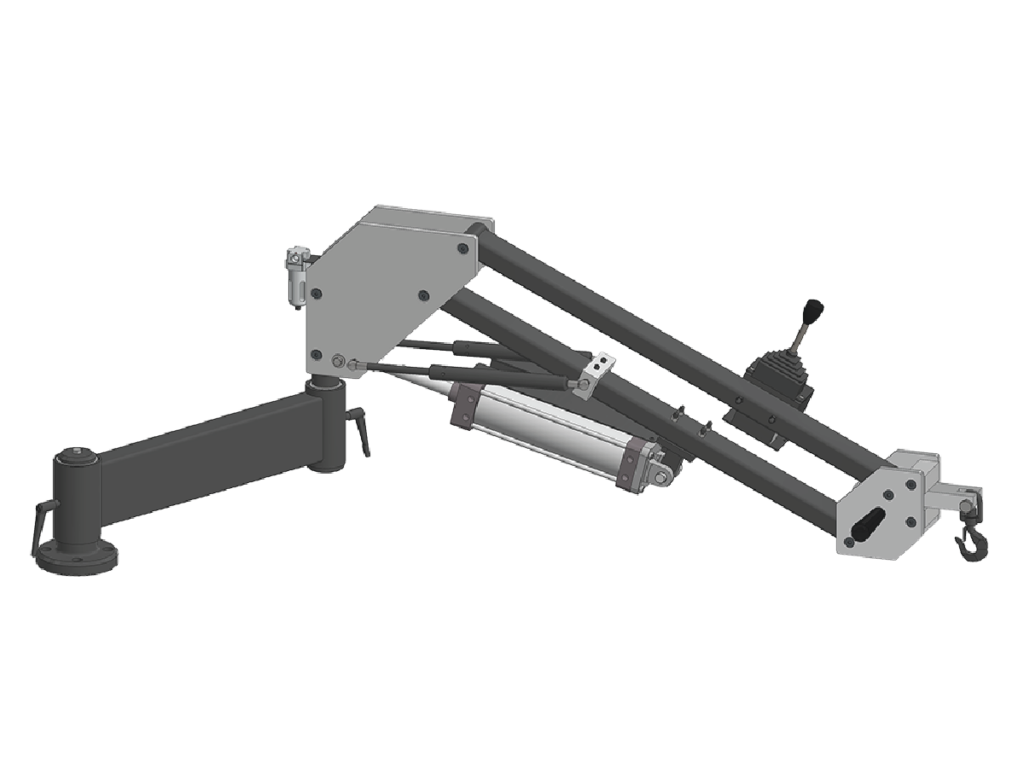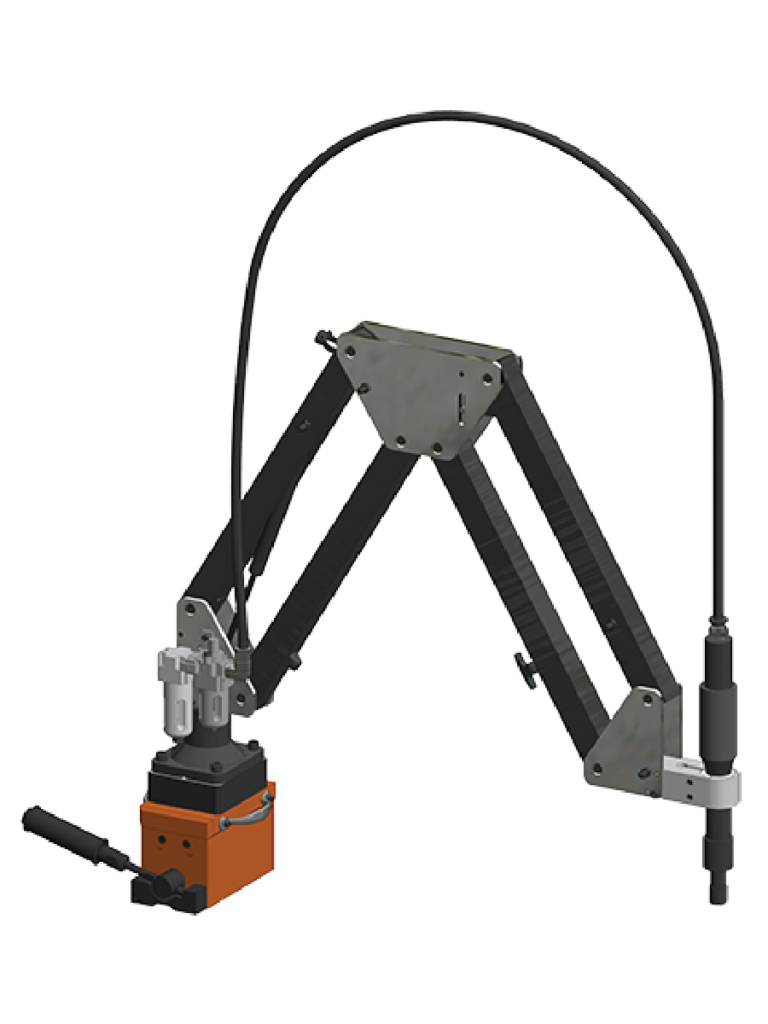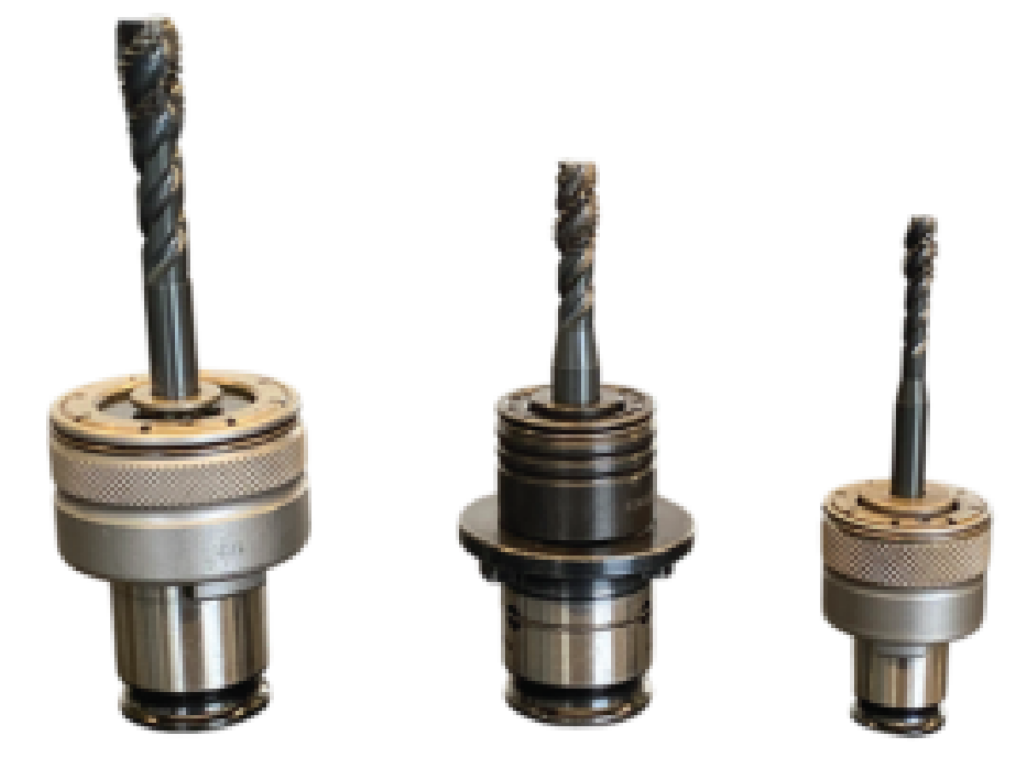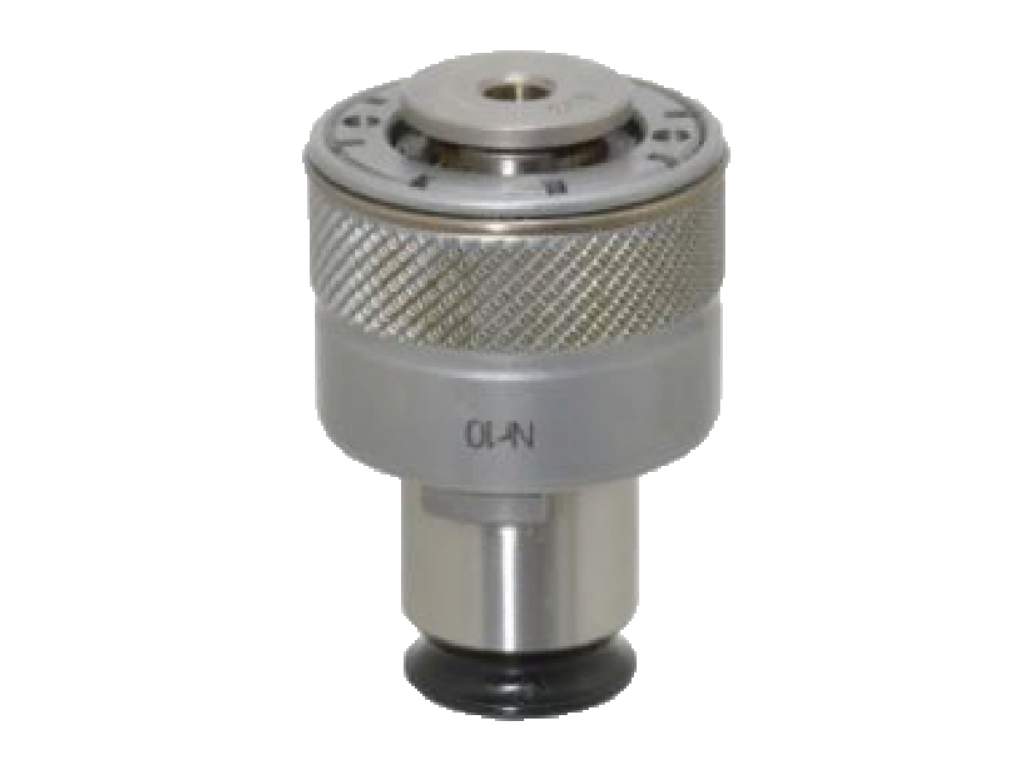Watch the video of this application at the bottom of the page.
Here is an example of a very simple torque reaction solution. A customer inquired in looking to counterbalance a 25-pound tool with over 497 foot-pounds (625 Newton-meters) of torque. The customer already had a reaction plate, and they wanted to see if we could incorporate this plate into a FlexArm.
The FlexArm engineers took the reaction plate and integrated it into a custom-designed block on the G-60 arm. The customer’s tool was an inline tool operating in a vertical down fastening orientation, so a simple custom block was designed to accept the reaction plate to the underside of the mount.
For custom torque reaction solutions, we normally require the customer to send in the tool, and we create a mount around the tooling. In this case, all we needed was the customer to send in the reaction plate so we could custom fit it to the arm. The reaction plate paired with a FlexArm is a simple solution for anyone looking to counterbalance large amounts of torque.
If you’re looking for a simple or complex torque reaction solution, contact us or give us a call at 1-800-837-2503, and we can design a custom solution to fit your needs.


